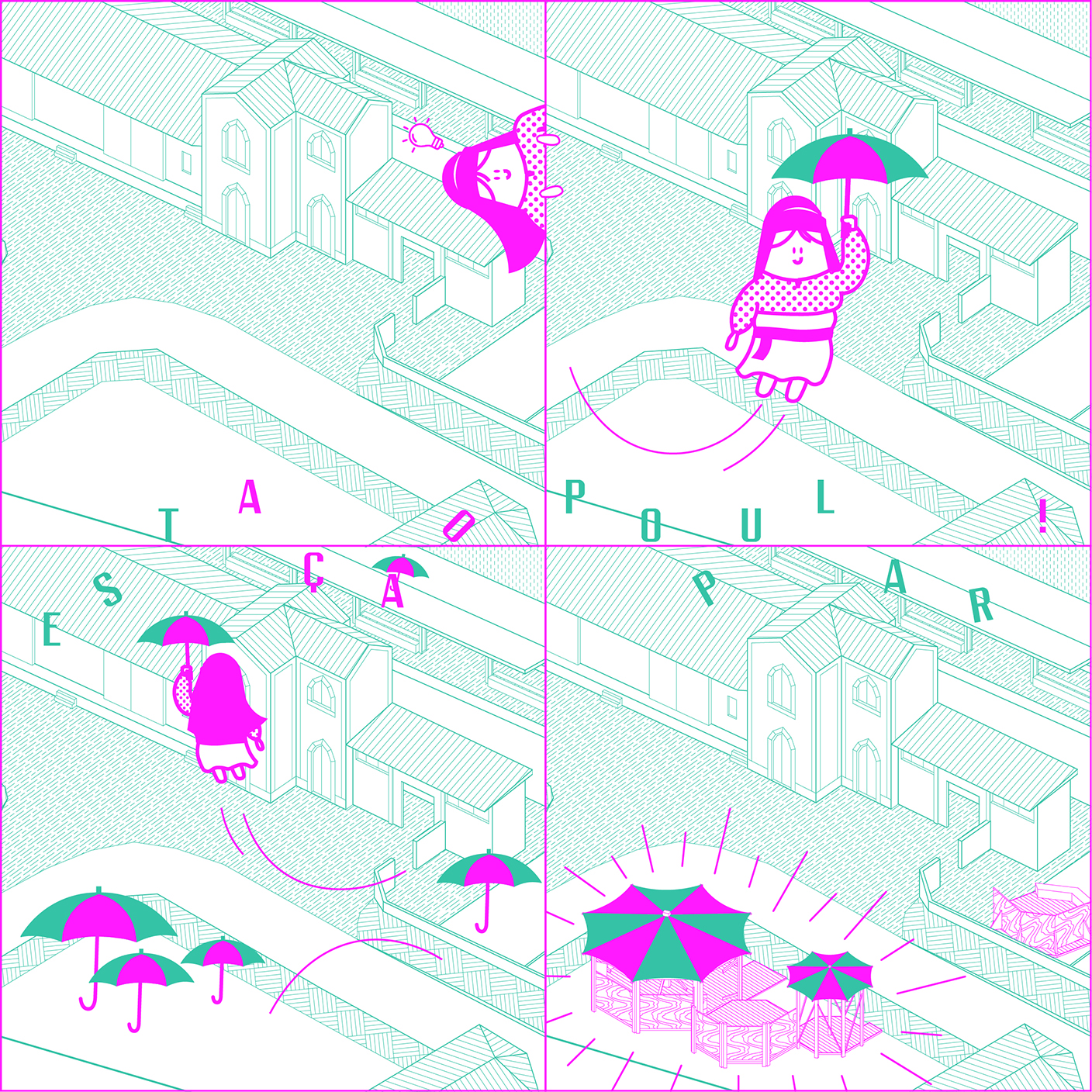Re-Appropriation of Águeda’s Common Spaces within Their Fragmented Urban Forms and Collective Musical Expressions
Estação popular aims to re-activate and reclaim a barely used public space in the municipality of Águeda by supporting local collective expressions. This popular station refers to the project’s primary location, the railway station, a quasi-central non-place where few times a year Cancioneiro de Águeda performs, giving this site a shred of life. While, This popular action proposes a different way of seeing this space, restoring it together with and for Águeda’s collectives and citizens.
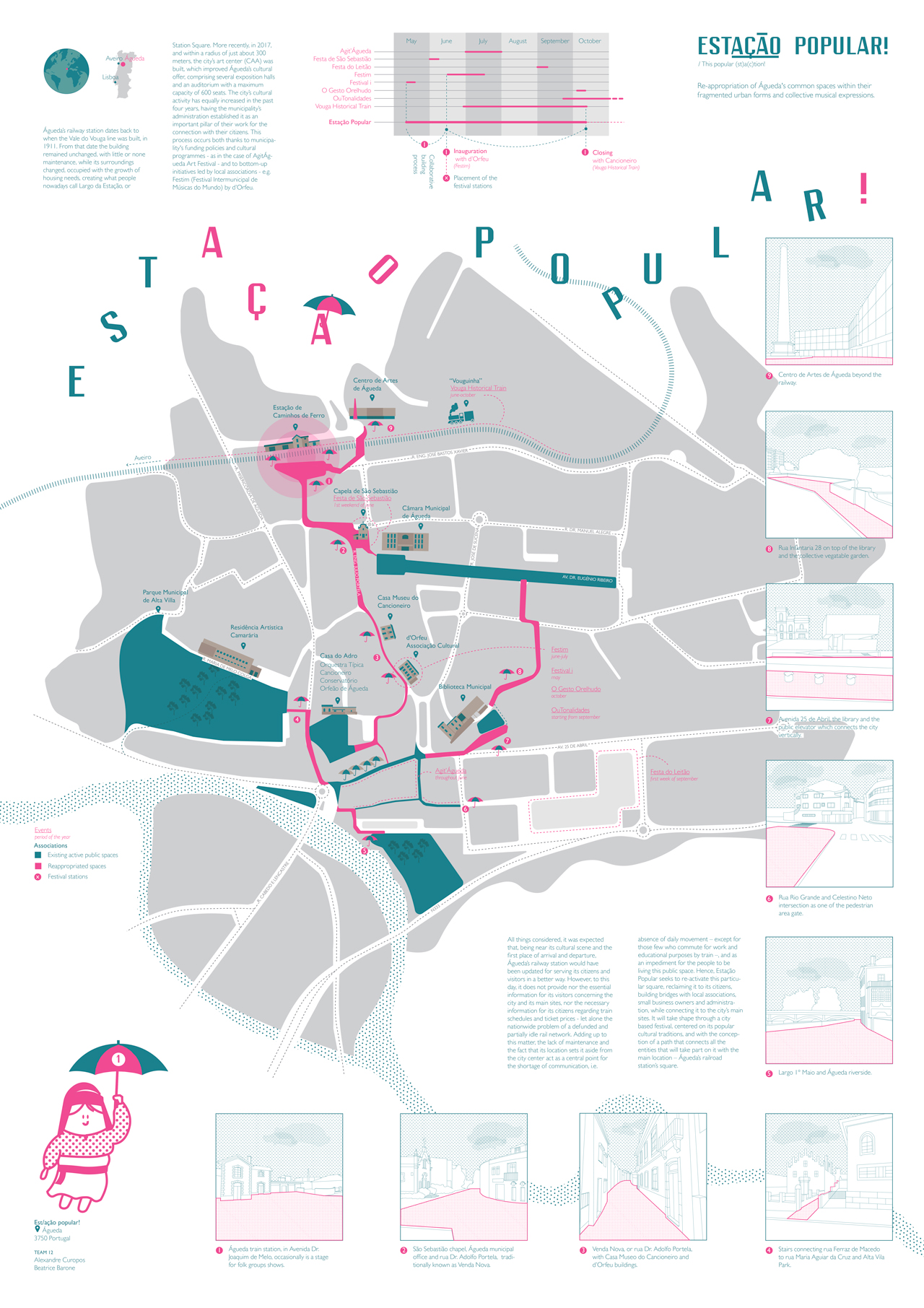
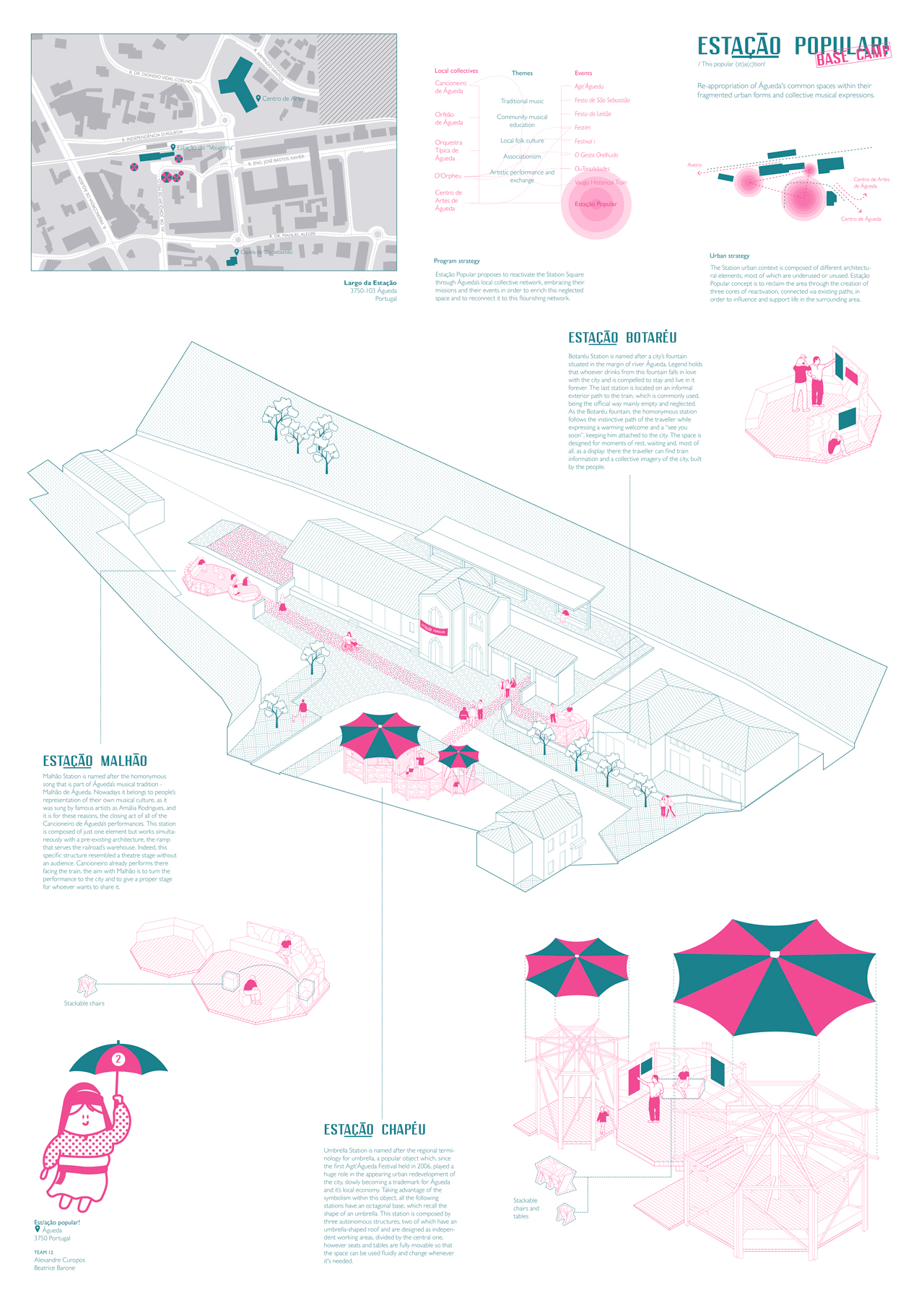
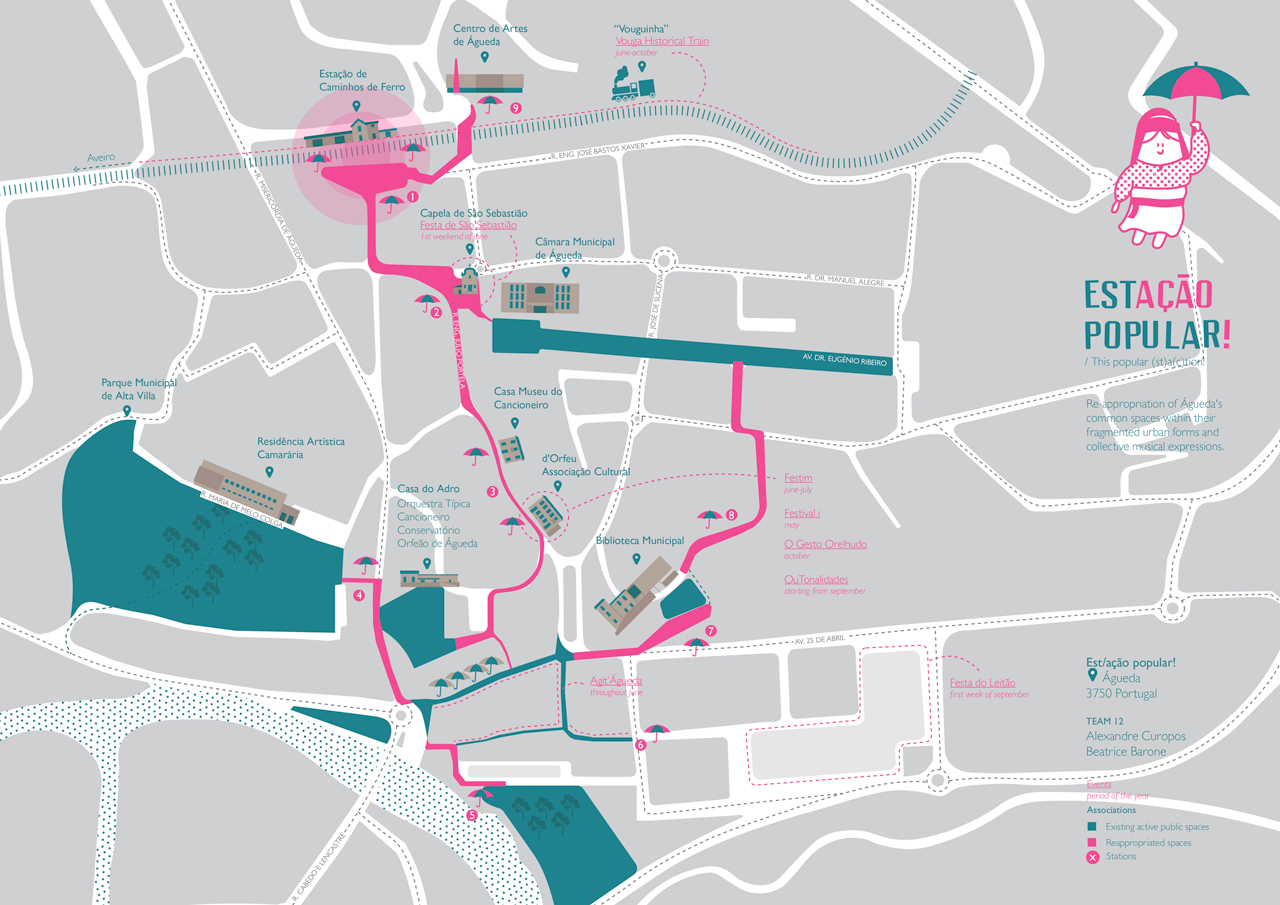
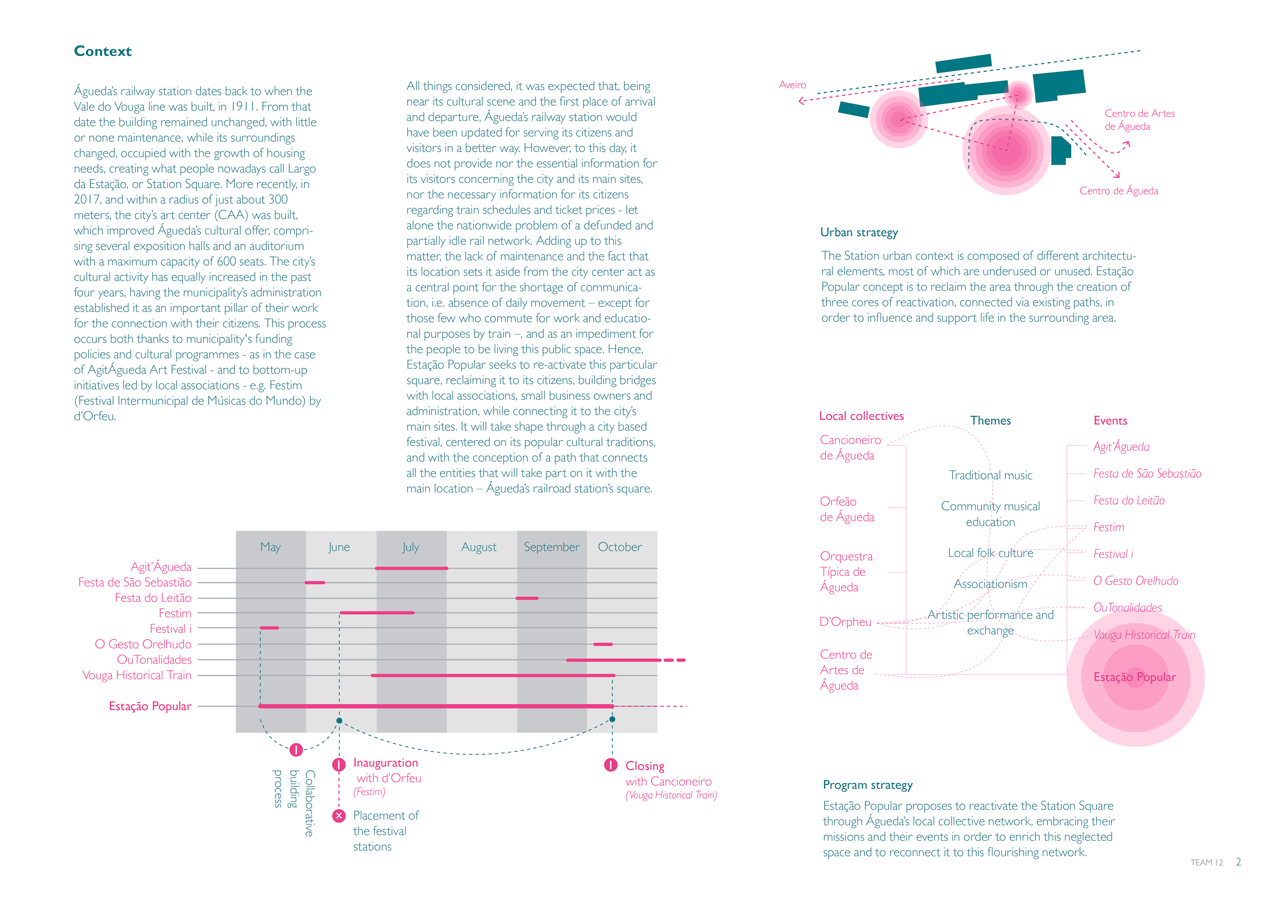
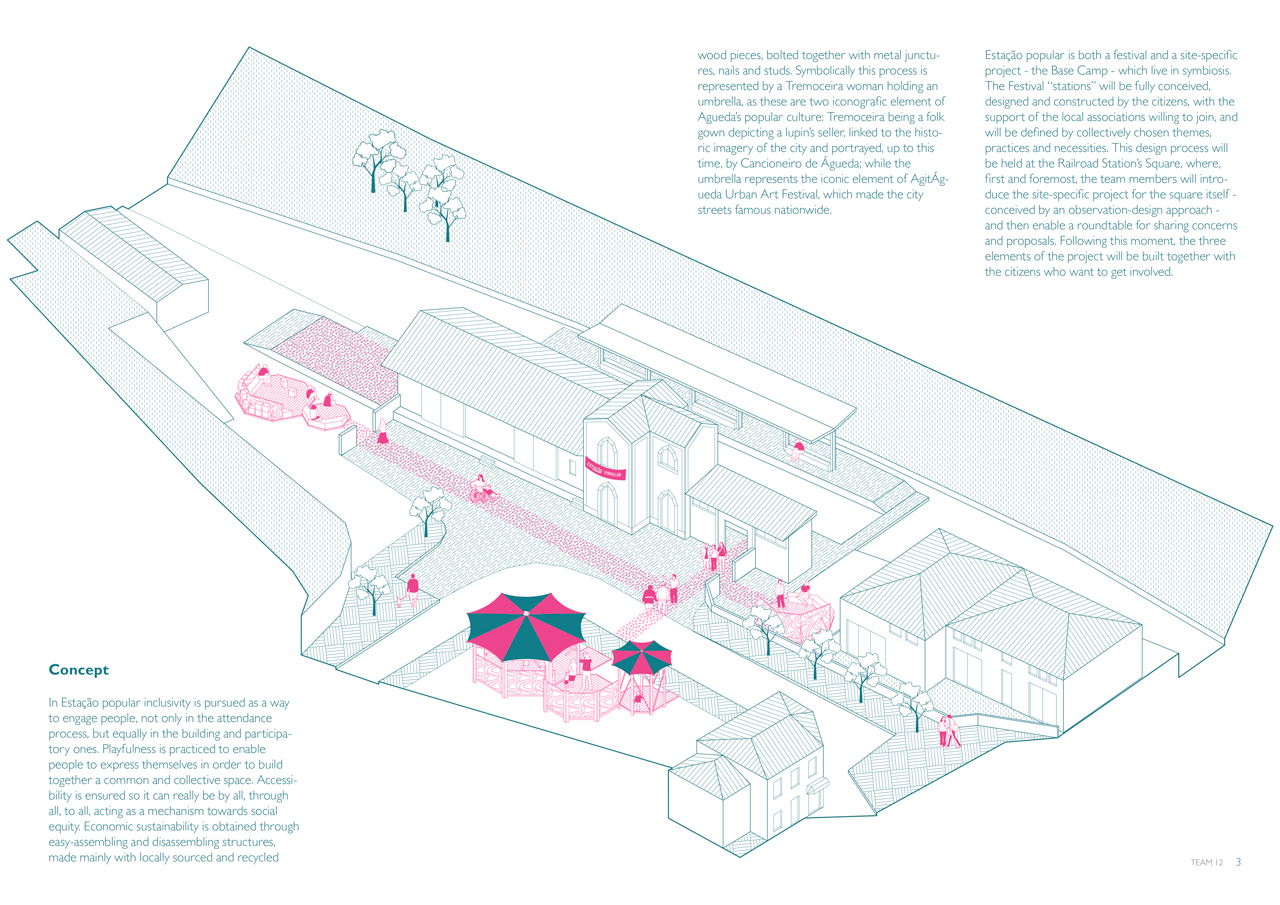
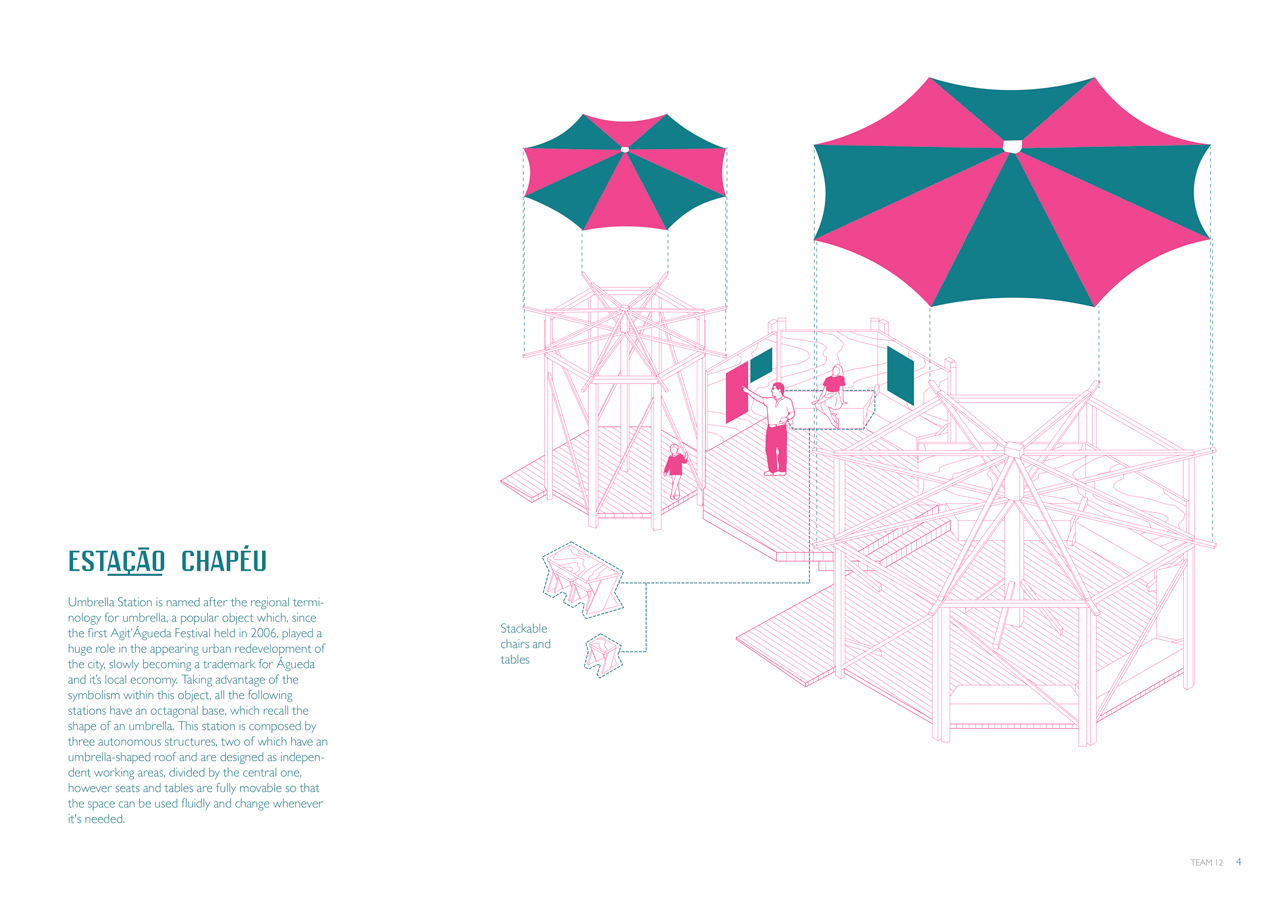
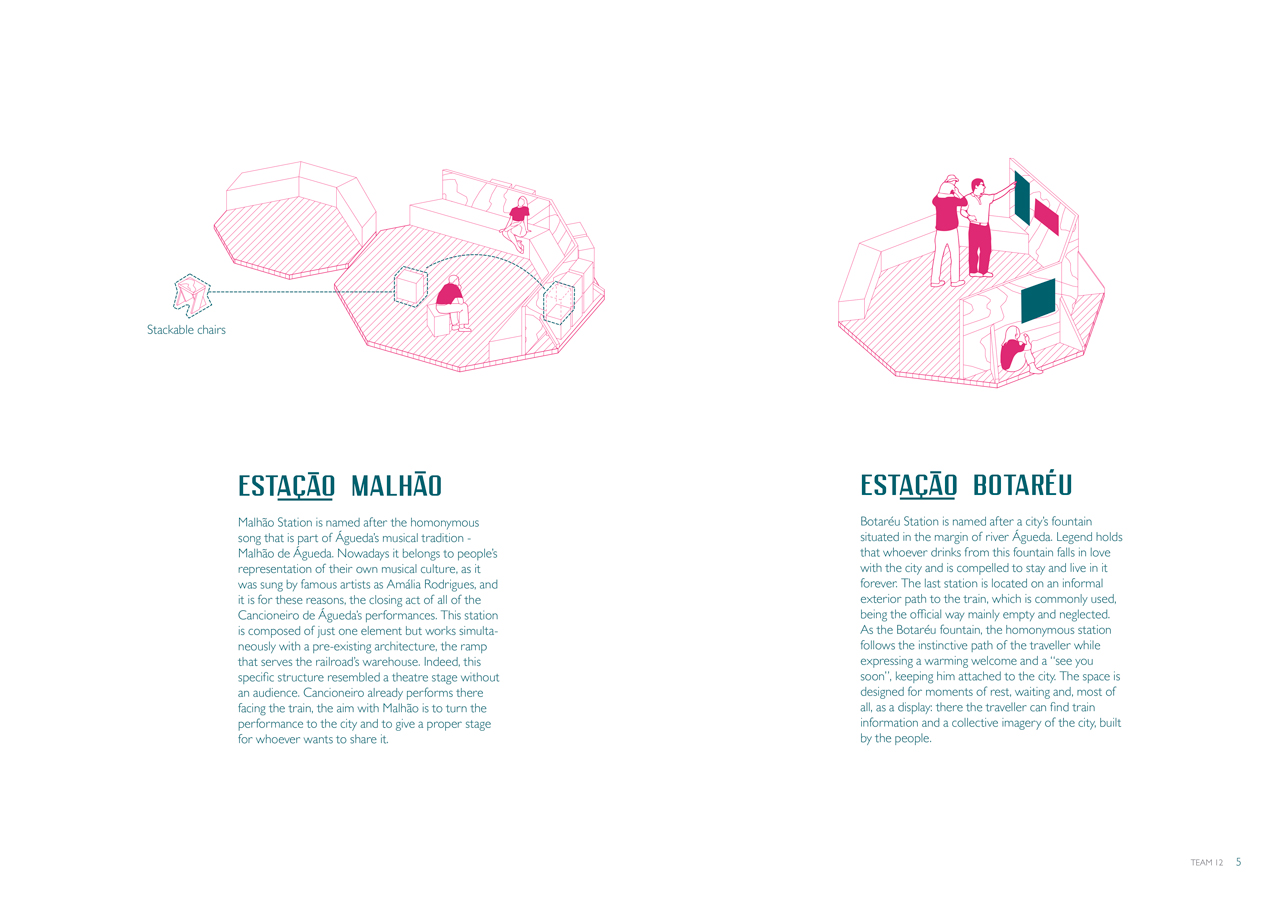
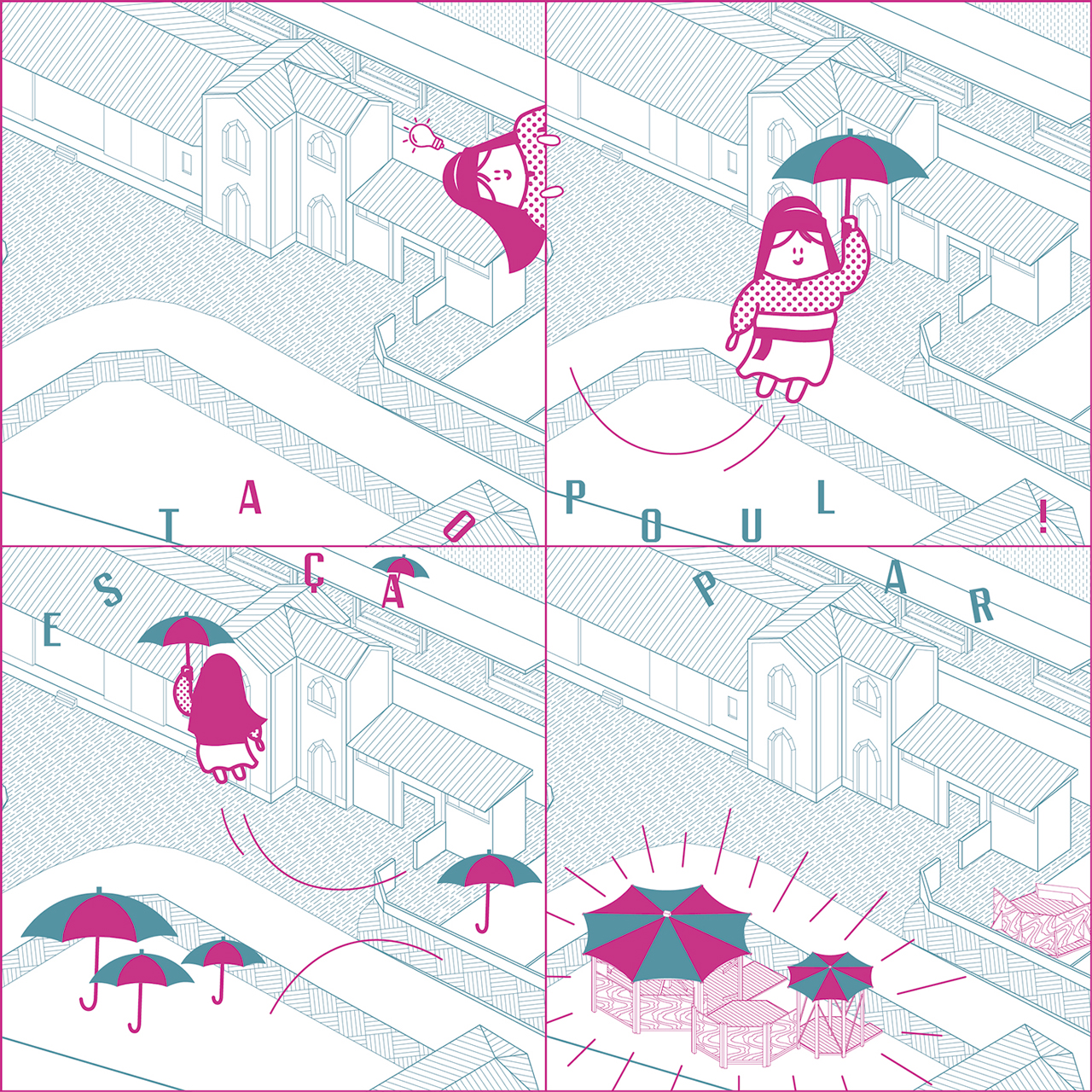
The Site and the Neighbourhood
Águeda’s railway station dates back to when the Vale do Vouga line was built in 1911. This particular railroad had to make a detour from what was the obvious direct path to include Águeda, significantly increasing its length [1], which itself demonstrates the importance of the city to its region. From that date, the building remained unchanged, with little or no maintenance, while its surroundings changed, occupied due to the growth of housing needs, creating what people nowadays call Largo da Estação or Station Square. One factor contributing to this growth was the increase of the population in more than double compared to what was registered in 1911 [2]. More recently, in 2017, and within a radius of about 300 metres, the city’s art centre (CAA) was built, improving Águeda’s cultural offer. The centre comprises several exposition halls and an auditorium with a maximum capacity of 600 seats. The city’s cultural activity has equally increased in the past four years, having the municipality’s administration established culture as an important pillar of their work to connect with their citizens. This process occurs both thanks to the municipality’s funding policies and cultural programmes – as in the case of AgitÁgueda Art Festival – and to bottom-up initiatives led by local associations – e.g. Festim (Festival Intermunicipal de Músicas do Mundo) by d’Orfeu.
All things considered, it was expected that, Águeda’s railway station would have been updated for serving its citizens and visitors in a better way, being near its cultural scene and the first place of arrival and departure. However, to this day, it does not provide either the essential information concerning the city and its main sites, or regarding train schedules and ticket prices – let alone the nationwide problem of a defunded and partially idle rail network. Adding up to this matter, the lack of maintenance and the fact that its location sets it aside from the city centre act as a central point for the shortage of communication, i.e. absence of daily movement – except for those few who commute for work and educational purposes by train –, and as an impediment for the people to be living this public space. Hence, Estação Popular seeks to re-activate this particular square, reclaiming it to the citizens, building bridges with local associations, small business owners and administration while connecting it to the city’s main sites. It will take shape through a city-based festival, centred on its popular cultural traditions, and with the conception of a path that connects that connects the main location – Águeda’s railroad station’s square – with all the entities involved.
The Design Proposal
In Estação popular inclusivity is pursued to engage people, not only in the attendance process but equally in the building and participatory ones. Playfulness is practised to enable people to express themselves in order to build together a common and collective space. Accessibility is ensured so it can really be by all, through all, to all, acting as a mechanism towards social equity. Economic sustainability is obtained through easy-assembling and disassembling structures, made mainly with locally sourced and recycled wood pieces, bolted together with metal junctures, nails and studs. Symbolically, this process is represented by a Tremoceira woman holding an umbrella, as these are two iconographic elements of Águeda’s popular culture: Tremoceira is a folk gown depicting a lupin’s seller, linked to the historical imagery of the city and portrayed, up to this time, by Cancioneiro de Águeda; while the umbrella represents the iconic element of AgitÁgueda Urban Art Festival, which made the city streets famous nationwide.
Estação popular is both a festival and a site-specific project – the Base Camp – which live in symbiosis. The Festival “stations” will be fully conceived, designed and constructed by the citizens, with the support of the local associations willing to join, and will be defined by collectively chosen themes, practices and necessities. This design process will be held at the Railroad Station’s Square, where, first and foremost, the team members will introduce the site-specific project for the square – conceived according to an observation-design approach – and then enable a roundtable for sharing concerns and proposals. Following this moment, the three elements of the project will be built together with the citizens who want to get involved.
Estação Chapéu is named after the regional terminology for umbrella, a popular object which, since the first Agit’Águeda Festival held in 2006, played a huge role in the appearing urban redevelopment of the city, slowly becoming a trademark for Águeda and its local economy. Taking advantage of the symbolism within this object, all the following stations have an octagonal base, which recalls the shape of an umbrella. This station is composed of three autonomous structures, two of which have an umbrella-shaped roof and are designed as independent working areas, divided by the central one. However, seats and tables are fully movable so that the space can be used fluidly and change whenever it’s needed.
Estação Malhão is named after the homonymous song that is part of Águeda’s musical tradition – Malhão de Águeda. Nowadays, it belongs to people’s representation of their own musical culture, as it was sung by famous artists as Amália Rodrigues, and it is for these reasons, the closing act of all of the Cancioneiro de Águeda’s performances. This station is composed of just one element but works simultaneously with a pre-existing architecture, the ramp that serves the railroad’s warehouse. Indeed, this specific structure resembled a theatre stage without an audience. Cancioneiro already performs there facing the train; the aim with Malhão is to turn the performance to the city and to give a proper stage for whoever wants to share it.
Estação Botaréu is named after a city’s fountain situated at the margin of river Águeda. Legend holds that whoever drinks from this fountain falls in love with the city and is compelled to stay and live in it forever. The last station is located on an informal exterior path to the train, which is commonly used, being the official way mainly empty and neglected. As the Botareu fountain, the homonymous station follows the instinctive path of the traveller while expressing a warming welcome and a “see you soon,” keeping him attached to the city. The space is designed for moments of rest, waiting and, most of all, as a display where the traveller can find train information and collective imagery of the city, built by the people.
Notes
[1] Busquets de Aguilar, “A Evolução Histórica Dos Transportes Terrestres Em Portugal,” Gazeta Dos Caminhos De Ferro 1475 (1949).
[2] “Resultados Preliminares,” INE - Plataforma De Divulgação Dos Censos (2021). https://censos.ine.pt/scripts/db_censos_2021.html
The Jury’s View
“The project proposal reflects and operate within the cultural and social context. The architecture concept and aesthetic are connected to the local identity.”
“The programme and the interconnection with the local activities are the strongest points of the proposal.”
“The link with existent cultural activities throughout the year is the key of the proposal narrative, thus creating a strong connection with the local community and its identity. It is made from reclaimed materials, it is accessible to all, it uses pre-existences in a clever way, it is multifunctional and usable for more than one event.”
